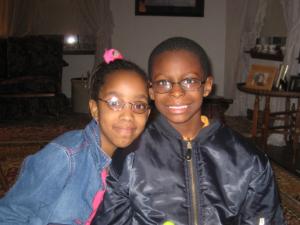Research Projects With Small Children
Attention and distractibility in early childhood: What have we learned?
To study attention and distractibility in early childhood, Dr. Kannass uses paradigms similar to the ones she uses with babies, but developmentally appropriate. Here, children are given a task to do (e.g., putting  together a puzzle) or toy to explore, and while they are working on that task or exploring that toy, audio-visual events (e.g., segments from a children’s television program) appear on a television off to the side.
together a puzzle) or toy to explore, and while they are working on that task or exploring that toy, audio-visual events (e.g., segments from a children’s television program) appear on a television off to the side.
Recent research has shown that there are striking changes in attention during the preschool years and that the kinds of distracting events that are disruptive to adults are very different than the kinds of distracting events that are disruptive to young children (Kannass & Colombo, 2007). Distracting events can be characterized in many ways; for example, they may be broadly characterized in terms of whether they are present all of the time (e.g., constant background noise) or periodic (e.g., background noise that comes on and off intermittently). At 3.5 years of age, both constant and periodic distracting events were disruptive to 3.5-year-old’s task performance--their performance scores were lower than a group of children who worked without distraction. In contrast, at 4 years of age, only constant distraction was detrimental to attention and performance. Thus, for the 3.5-year-olds, attention and performance may be disrupted by any competition for attentional focus; 4-year-olds, on the other hand can apparently tune out the periodic competition for attention, but they cannot tune out constant distraction. This is very different from what we see in adults; adults perform more poorly when distracting events are periodic and report them to be more annoying.


